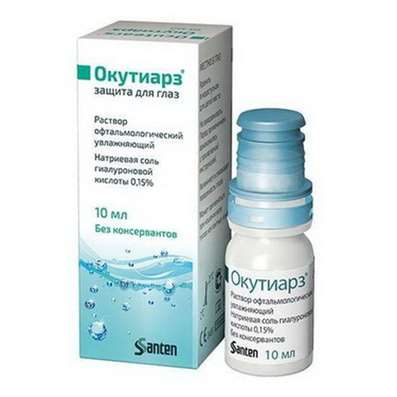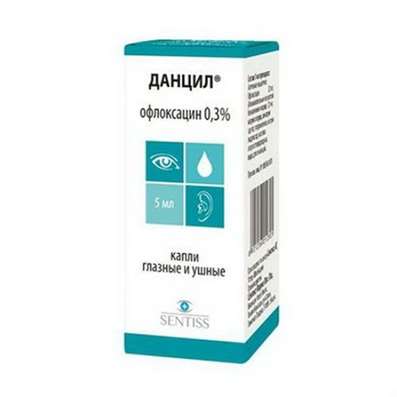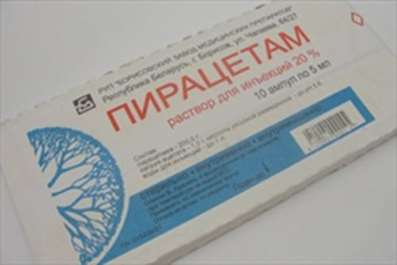Instruction for use: Mirtazapine
I want this, give me price
Latin name of substance Mirtazapine
Mirtazapinum (genus. Mirtazapini)
Chemical name
1,2,3,4,10,14b-Hexahydro-2-methylpyrazino [2,1-a] pyrido [2,3-c] [2] benzazepine; racemic mixture of (+) - and (-) - enantiomers
Gross formula
C17H19N3
Pharmacological group:
Antidepressant
The nosological classification (ICD-10)
F32 Depressive episode: Adynamic subdepression; Astheno-adynamic subdepressive states; Asthenoadressive disorder; Astheno-depressive disorder; Asthenodepressive state; Astheno-depressive state; Major Depressive Disorder; Vyaloapatichesky depression with retardation; Double Depression; Depressive pseudodement; Depressive illness; Depressive mood disorder; Depressive disorder; Depressive mood disorder; Depressive state; Depressive disorders; Depressive syndrome; Depressive syndrome larviated; Depressive syndrome in psychoses; Depressed masks; Depression; Depression Depletion; Depression with the phenomena of inhibition within the framework of cyclothymia; Depression is smiling; Involutional depression; Involutionary melancholy; Involutional depression; Manic-depressive disorder; Masked Depression; Melancholic Attack; Neurotic depression; Neurotic depression; Shallow Depression; Organic depression; Organic depressive syndrome; Simple depression; Simple melancholic syndrome; Psychogenic depression; Reactive depression; Reactive depression with moderate psychopathological symptoms; Reactive depressive states; Reactive depression; Recurrent depression; Seasonal depressive syndrome; Severostatic depression; Senile Depression; Symptomatic Depression; Somatogenic depression; Cyclotymic depression; Exogenous depression; Endogenous depression; Endogenous Depressive Conditions; Endogenous Depression; Endogenous depressive syndrome
F33 Recurrent depressive disorder: Major depressive disorder; Secondary depression; Double Depression; Depressive pseudodement; Depressive mood disorder; Depressive disorder; Depressive mood disorder; Depressive state; Depressive syndrome; Depressed masks; Depression; Depression is smiling; Involutional depression; Involutional depression; Masked Depression; Melancholic Attack; Reactive depression; Reactive depression with moderate psychopathological symptoms; Reactive depressive states; Exogenous depression; Endogenous depression; Endogenous Depressive Conditions; Endogenous Depression; Endogenous depressive syndrome
CAS code
61337-67-5
Characteristics of the substance Mirtazapine
Crystalline powder from white to cream color, slightly soluble in water. Molecular weight 265.36.
Pharmacology
Pharmacological action - antidepressant.
It blocks central presynaptic and postsynaptic alpha2-adrenergic inhibitory receptors, enhances central noradrenergic and serotonergic transmission. It is a strong antagonist of serotonin 5-HT2 and 5-HT3 receptors, practically does not interact with 5-HT1A and 5-HT1B receptors. Mirtazapine is also a potent antagonist of histamine H1 receptors, which causes its sedative effect. Slightly affects the alpha1-adrenoreceptors and cholinergic receptors. The effect on peripheral alpha-adrenergic and muscarinic receptors causes the development of orthostatic hypotension and anticholinergic effects.
It is most effective in depressive states with symptoms in the clinical picture such as inability to experience pleasure and joy, loss of interest (anhedonia), psychomotor retardation, sleep disturbance (especially in the form of early awakenings), weight loss, suicidal thoughts and mood lability. In clinical conditions, anxiolytic and hypnotic properties are manifested, therefore, mirtazapine is effective in anxious depression. The antidepressant effect usually develops after 1-2 weeks of treatment.
Quickly and completely absorbed after ingestion, eating practically does not affect the speed and completeness of absorption. Cmax is achieved after 2 hours, absolute bioavailability is about 50%. Css in plasma is achieved within 5 days and is proportional to the dose in the dose range of 15-80 mg. At concentrations of 0.01-10 μg / ml, 85% is bound to blood proteins. The main ways of biotransformation are demethylation and hydroxylation followed by conjugation of metabolites with glucuronic acid. Isozymes CYP2D6 and CYP1A2 cytochrome P450 participate in the formation of 8-hydroxy metabolite mirtazapine, CYP3A4 - in the formation of N-demethylated and N-oxidized metabolites. Some metabolites are pharmacologically active, but their concentration in the plasma is very small. It is excreted in the urine (75% of the dose) and feces (15%). (-) - The enantiomer is deduced 2 times slower than the (+) - enantiomer. T1 / 2 is 20-40 hours (for men - 26 hours, for women - 37 hours). The clearance of mirtazapine decreases with renal or hepatic insufficiency.
Application of Mirtazapine
Depressive states.
Contraindications
Hypersensitivity, simultaneous administration with MAO inhibitors.
Restrictions on the use
Epilepsy and organic lesions of the brain (possible development of convulsive conditions); heart disease (conduction disorder, angina pectoris, or recent myocardial infarction); cerebrovascular diseases (including ischemic attacks in the anamnesis); arterial hypotension and conditions predisposing to hypotension (including dehydration and hypovolemia); drug dependence and propensity to abuse of psychoactive drugs (in the anamnesis); mania, hypomania; violation of urination, incl. with hyperplasia of the prostate; acute closed angle glaucoma, increased intraocular pressure; diabetes; hepatic and / or renal insufficiency; age to 18 years (safety and efficacy not established).
Application in pregnancy and lactation
When pregnancy is possible only in case of emergency (adequate and strictly controlled studies on use in pregnant women were not performed).
Teratogenic effects. In experimental studies of reproduction in animals with the administration of mirtazapine to pregnant rats and rabbits at doses up to 100 mg / kg and 40 mg / kg, respectively (20 and 17 times higher than the MPDR calculated in mg / m2), there is no teratogenic effect. However, in female rats treated with mirtazapine, there was an increase in postimplantation loss, a decrease in baby weight at birth and an increase in infant mortality in the first 3 days of lactation. The cause of these phenomena is unclear, they were observed at doses 20 times higher than MPDH, but were not observed at doses equivalent to 3 MPH.
The action category for fetus by FDA is C.
For the duration of treatment, breastfeeding should be discontinued (no data on penetration into breast milk).
Side effects of Mirtazapine
Based on the results of controlled trials of 6 weeks, treatment was discontinued due to the occurrence of side effects of approximately 16% of the 453 patients receiving mirtazapine, compared to 7% of the 361 patients who received the placebo. Side effects observed in ≥1% of patients associated with discontinuation of treatment and recognized as mediated by mirtazapine (i.e., those observed against mirtazapine at least twice as often as placebo) include the following: drowsiness 10.4% ( 2.2%), nausea 1.5% (0%).
The adverse effects observed in these clinical trials in at least 1% of patients receiving mirtazapine and those observed less frequently than in the placebo group: headache, infection, chest pain, palpitations, tachycardia, orthostatic hypotension, nausea, dyspepsia, diarrhea, flatulence, lowering of libido, hypertension, pharyngitis, rhinitis, sweating, amblyopia, tinnitus, taste perversion.
Interaction
Strengthens the inhibitory effect of ethanol on the central nervous system and the sedative effect of anxiolytics of the benzodiazepine structure.
Do not use simultaneously with MAO inhibitors and within 2 weeks after their withdrawal.
Inductors or inhibitors of metabolic enzymes can alter the concentration of mirtazapine in the blood.
In healthy volunteers, the cytochrome P450 inducer, phenytoin (200 mg daily), when taken concomitantly with mirtazapine (30 mg daily) increased mirtazapine clearance by a factor of 2, which resulted in a 45% decrease in the plasma concentration of mirtazapine.
Carbamazepine - an inducer of cytochrome P450 (400 mg twice daily) - with simultaneous administration with mirtazapine (15 mg twice daily) increased the clearance of mirtazapine by a factor of 2, which resulted in a 60% decrease in the plasma concentration of mirtazapine. In the case of phenytoin, carbamazepine or other inducers of hepatic metabolism (eg rifampicin), patients on treatment with mirtazapine may require an increase in the dose of mirtazapine.
Cimetidine, a weak inhibitor of CYP1A2, CYP2D6 and CYP3A4, when taken by healthy volunteers (800 mg twice daily), together with mirtazapine (30 mg daily), raised the AUC of mirtazapine in an equilibrium state by more than 50%. The dose of mirtazapine may be reduced with the onset of concomitant treatment with cimetidine or increased when cimetidine treatment is completed.
In healthy volunteers, the intake of a potent inhibitor of CYP3A4 ketoconazole (200 mg twice daily for 6.5 days) and a single dose of mirtazapine resulted in an increase in Cmax and AUC of mirtazapine by approximately 40 and 50%, respectively.
Caution should be exercised while using mirtazapine with strong CYP3A4 inhibitors, such as azole antifungal agents, HIV protease inhibitors, erythromycin and nefazodone.
Myelotoxic drugs increase the manifestation of hematotoxicity of mirtazapine.
Mirtazapine (30 mg / day) in an equilibrium state caused a small but statistically significant increase in INR in healthy volunteers who received warfarin. It is recommended to monitor INR in case of simultaneous treatment with warfarin and mirtazapine.
Overdose
Symptoms: retardation, drowsiness, disorientation, tachycardia, hallucinations, increase or decrease in blood pressure.
Treatment: gastric lavage, activated charcoal, symptomatic and maintenance therapy.
Routes of administration
Inside.
Precautions for the substance Mirtazapine
When prescribing antidepressants, patients with schizophrenia or other psychotic disorders may increase psychotic symptoms. In the treatment of the depressive phase of bipolar affective psychosis, an affect inversion with the development of mania can be observed. Given the possibility of suicidal tendencies, you should prescribe only a small number of tablets.
Women of reproductive age need to use reliable methods of contraception.
During treatment it is recommended to refrain from drinking alcohol. Caution should be used when prescribing benzodiazepines simultaneously with mirtazapine.
The abolition of treatment is carried out, gradually reducing the dose and / or increasing the intervals between doses. Abrupt cancellation after prolonged use can lead to nausea, headache and general deterioration of well-being.
When jaundice, symptoms of infectious diseases or a change in the picture of blood, treatment is interrupted.
During the period of treatment, care must be taken when driving vehicles and engaging in other potentially hazardous activities requiring increased attention and speed of psychomotor reactions.

 Cart
Cart





